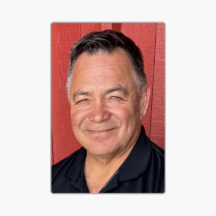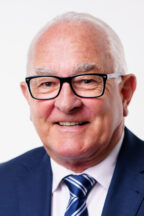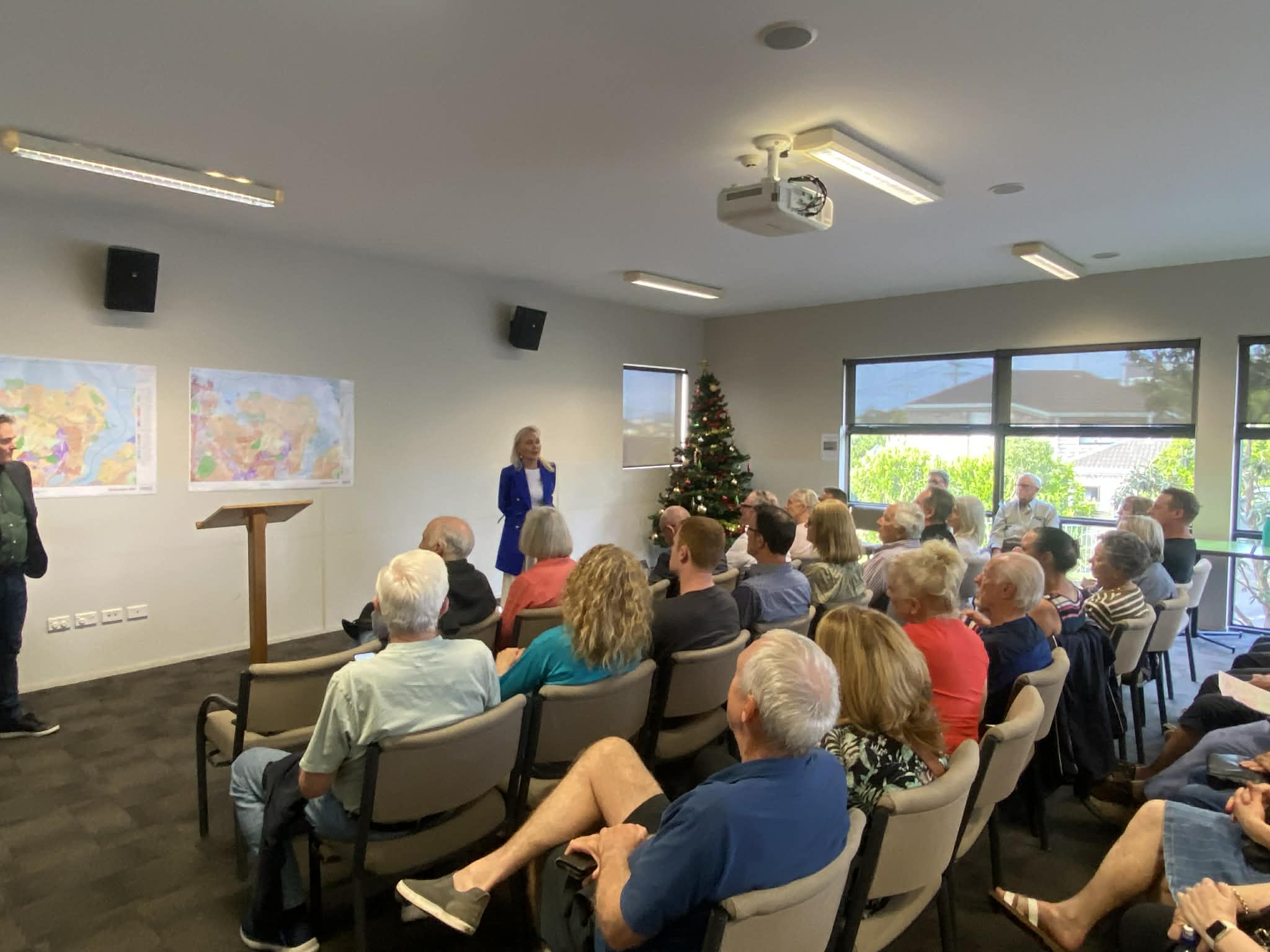Local board elections are coming up with voting between Tuesday 9 September to Saturday 11 October 2025. Local boards make decisions about local issues, activities and services and contribute to regional strategies, policies, plans and decisions. You can find out more about what Local Boards do here.
One of the many important contributions the Ōrākei Local Board makes to our community is contributing to transport strategies and transport choice in our area. Having real transport choice in our community is important because we can’t fit any more roads in our suburbs, but when we create safe and easy options for walking, cycling, and taking public transport, it takes cars off the road. That means less congestion for everyone, so the drive to work or to drop off the kids is faster and less stressful…or if the streets feel safer kids might even be able to walk or cycle to school.
Transport choice also leads to cleaner air and a more vibrant community for everyone. It’s about making our streets work better for all of us, and that includes making driving a more enjoyable experience.
One amazing option for transport choice runs through our suburbs, Te Ara Ki Uta Ki Tai shared path, a continuous traffic-free walking and cycling route with connections in Glen Innes, Kohimarama, Meadowbank, Ōrākei, Tāmaki Drive and all the way to the city centre. The more people who are able to access it by bicycle the more value we’ll get from it, including in terms of less traffic on the road. Access to the shared path needs improvements for cycling on nearby streets, and it needs the link to Gowing Drive.
In addition, New Zealand’s largest transport infrastructure project, the City Rail Link (CRL) is also planned to open in 2026. The CRL adds more capacity than a 6-lane motorway across the entire metro rail network, enabling tens of thousands more congestion-free journeys daily.
Because we believe transport choice is so vital for the future of our community, the Residents Association and Bike Eastern Suburbs asked all the local board candidates for their views on this topic.
Questions emailed to all candidates:
- What’s your vision for cycling in the Ōrākei Local Board area?
- What do you think is the biggest barrier to cycling in our area, and what actions would you support to address this?
- Specifically, what do you intend to do to reverse the current trend of fewer children walking and cycling to school, and more being driven to school?
- What initiatives would you advocate for to maximise the value of Te Ara Ki Uta Ki Tai” to residents in our area?
- The CRL adds more capacity than a 6-lane motorway across the entire metro rail network, enabling tens of thousands more congestion-free journeys daily. What initiatives would you propose to maximise the value of investment to residents in our area?
Thank you to the candidates that responded. Sadly despite multiple attempts in various different ways to contact the candidates who hadn’t responded we weren’t able to capture responses from all candidates. Responses have been added in last name alphabetical order.
Troy Churton
- What’s your vision for cycling in the Ōrākei Local Board area?
In the late 1990s I instigated the circumnavigable pathway around Orakei Basin with aspirations for pathways continued across Hobson Bay as a means to enable more pedestrians and cyclists to commute and recreate away from vehicular routes. Now we are about to complete a wonderful GI to Tamaki route. I want more of these shared pathway developments. My bigger vision is based on fundamental master planning change – whereby all this central government mandated intensification has more infrastructure-led , which includes more dedicated carriage-way space to accommodate cycling, and developer-incentive settings to ensure the infill they build ensures space is given over for carriage ways to be widened so practical cycle and pedestrian space can be created.
- What do you think is the biggest barrier to cycling in our area, and what actions would you support to address this?
Similar to the above. A barrier for fostering more cycling for commuting as much as recreating is the absence of infrastructure-led settings in our growth planning to ensure dedicated cycleways. There are still opportunities to broaden carriageways that can support a range of public transport and have cycleways.
- Specifically, what do you intend to do to reverse the current trend of fewer children walking and cycling to school, and more being driven to school?
Our Orakei GI to Tamaki shared pathway is a start towards enabling local communities to encourage kids to walking or cycling to neighbourhood schools rather than get driven by parents. However I will continue to look at where we can invest in better sidewalks, crossings and traffic calmings, and ensure AT is addressing all school zone areas have optimal safety and visibility. I would look at ways of incentivising schools to up their engagement with parents to promote walking or biking to school too.
- What initiatives would you advocate for to maximise the value of Te Ara Ki Uta Ki Tai” to residents in our area?
Completing the Meadowbank connector, ensuring clearly marked and safe entry points from the surrounding area, looking at any amenity features that may appeal for example a water drinking fountain, CCTV monitored zones and so on.
- The CRL adds more capacity than a 6-lane motorway across the entire metro rail network, enabling tens of thousands more congestion-free journeys daily. What initiatives would you propose to maximise the value of investment to residents in our area?
The real optimisation for CRL would come from a regionally led public campaign and regional feeder bus services to local stations, not a local board one. But for a purely localised effort, we can ensure our local stations are being upgraded, have CCTV monitored bike store areas, advocate for friendlier discounted bulk ticket rates for schools ( I recall my school always had discounted ticketing for our daily train trips)
Lauren Hawken
- What’s your vision for cycling in the Ōrākei Local Board area?
With my background in urban planning, I strongly support connecting communities through a range of transport options, including cycling. A well-planned cycling network provides not only recreational benefits but also a safe, accessible, and sustainable alternative for everyday travel.
My vision is about connection. Living in Glendowie, I know firsthand how disconnected we are from the main cycling network – and the same is true for St Heliers. While the Glen Innes to Tāmaki Drive shared path is a fantastic asset, accessing it from our suburbs is not straightforward (speaking from experience).
As a candidate for the Ōrākei Local Board, I would support opportunities to better connect our communities into the wider cycling network, while ensuring that improvements are delivered in a balanced way that recognises the needs of all road users.
- What do you think is the biggest barrier to cycling in our area, and what actions would you support to address this?
My view is the same as the question posed above, I think the single biggest barrier to cycling in the Ōrākei Local Board area is the absence of a connected, and safe cycling network. I would support in creating this link, however it must also be balanced with other road users. I would look forward to having community involvement, to address this.
- Specifically, what do you intend to do to reverse the current trend of fewer children walking and cycling to school, and more being driven to school?
Many streets in our ward are narrow and experience high traffic volumes. Combined with time pressures on parents, this has likely contributed to more children being driven to school rather than walking or cycling.
To reverse this trend, I would:
– Support Safe Routes to School programmes wherever feasible.
– Advocate for traffic-calming measures that improve safety without relying on solutions like
speed bumps, which can increase carbon emissions.
– Encourage walking school buses and other supervised active travel initiatives.
– Look at whether we can create safe cycling routes, in addition to considering the needs of
all road users.
– Ensure that Auckland Transport engages with the community to implement solutions that
genuinely meet local needs, rather than relying solely on desktop planning exercises.
- What initiatives would you advocate for to maximise the value of Te Ara Ki Uta Ki Tai” to residents in our area?
Te Ara Ki Uta Ki Tai – the path of land to sea (the Glenn Innes to Tamaki Shared Path) is a major asset to our Ward, and I would advocate for initiatives that ensure it provides the greatest benefit to our local community.
Key priorities would include:
Enhanced connectivity – improving links from Glendowie, St Heliers, and other suburbs so residents can easily access the pathway by foot or bike, this must be done in consideration of existing road users. Community consultation is key here.
Safe access points – ensuring crossings (level), signage, and lighting make the pathway safe and convenient for people of all ages and abilities.
Community engagement and activation – promoting events, guided walks, cycling initiatives, and local history or ecological education opportunities along the route to increase use and awareness.
Integration with local transport networks – connecting the pathway to schools, parks, town centres, and public transport to make it a practical option for commuting as well as recreation. Community consultation should be undertaken with existing user groups, to get a balanced outcome. Auckland Transport needs to be engaged.
Environmental protection and enhancement – advocating and helping out where able in maintaining the natural and cultural values along the pathway so residents can enjoy a high-quality, sustainable experience.
- The CRL adds more capacity than a 6-lane motorway across the entire metro rail network, enabling tens of thousands more congestion-free journeys daily. What initiatives would you propose to maximise the value of investment to residents in our area?
To maximise its value for residents in the Ōrākei area, I would advocate for initiatives that make the City Rail Link (CRL) accessible, convenient, and integrated with our local transport network. I would like to list two that I can think of:
– Support and want to Improve local connections and easy access – with pedestrians,
cyclists and buses. Note, community consultation must be undertaken.
– Integration with wider transport planning – align local infrastructure funding, so that it can
be connected to the CRL initiatives, to work in tandem. i.e. improved level crossings etc.
Should be a collaborated approach.
Wyllis Pateoro Maihi
- What’s your vision for cycling in the Ōrākei Local Board area?
Cycling in the Ōrākei Local Board area should be a safe, easy, and enjoyable way to get around for everyone. My vision is to make it a real choice, whether you’re commuting to work or just out for a weekend ride with the family.
To make this happen, we need to focus on three key areas: Better Infrastructure, Increased Safety, Integrating our cycling culture.
- What do you think is the biggest barrier to cycling in our area, and what actions would you support to address this?
The biggest barriers to getting around safely are a focus on cars and short-sighted, ad-hoc planning.
My priority would be to champion safe, sustainable transport for everyone—whether you’re in a car, on a bike, a bus, train, or on foot. I would focus on completing what we’ve started, like planned cycleways to link up pathways, and implementing critical traffic calming measures in dangerous spots to make our roads safe for all.
- Specifically, what do you intend to do to reverse the current trend of fewer children walking and cycling to school, and more being driven to school?
My plan to get more kids cycling to school is built on five key actions:
– Engineering: Build safe paths and crossings around schools.
– Education: Teach kids bike skills and road safety.
– Encouragement: Make cycling fun with events and facilities like the East City BMX track.
– Enforcement: Enforce safe driving to protect young riders.
– Evaluation: Use data to prove our projects are working and secure more funding.
By incentivizing our schools and getting community support, we can make cycling a fun, safe, normal choice for our children.
- What initiatives would you advocate for to maximise the value of Te Ara Ki Uta Ki Tai” to residents in our area?
Have market days or fun activities along the route to get them there. Set up a “Bike Hub” similar to GI where you can recycle your cycle, and donate your unused bike and help our community roll.
- The CRL adds more capacity than a 6-lane motorway across the entire metro rail network, enabling tens of thousands more congestion-free journeys daily. What initiatives would you propose to maximise the value of investment to residents in our area?
To maximise the value of the City Rail Link, one initiative would be to make it a seamless part of a cycling journey. I would focus on two key areas:
– Station Security: Expanding secure bike parking, such as Locky Docks and bike cages, at all stations to give cyclists the confidence to leave their bikes.
– On-Train Access: Advocating for more dedicated bike storage space on trains to allow for flexible, end-to-end journeys by bike and rail.
Angus McPhee
- What’s your vision for cycling in the Ōrākei Local Board area?
Safety.
- What do you think is the biggest barrier to cycling in our area, and what actions would you support to address this?
Speed on the bike ways, I think there should be a limit to slow bikers down.
- Specifically, what do you intend to do to reverse the current trend of fewer children walking and cycling to school, and more being driven to school?
Good options.
- What initiatives would you advocate for to maximise the value of Te Ara Ki Uta Ki Tai” to residents in our area?
Not sure.
- The CRL adds more capacity than a 6-lane motorway across the entire metro rail network, enabling tens of thousands more congestion-free journeys daily. What initiatives would you propose to maximise the value of investment to residents in our area?
Maybe give some sort of incentive, I am not sure what that is.
Sarah Powrie 
- What’s your vision for cycling in the Ōrākei Local Board area?
An interconnected transport infrastructure plan, which includes walking and cycling, is integral to creating a functional and livable city. My vision includes a better integrated network along Tamaki Drive and planning for connections to schools, local centres and transport hubs.
- What do you think is the biggest barrier to cycling in our area, and what actions would you support to address this?
The biggest barriers are repurposing existing transport corridors to accommodate different modes effectively, along with the cost of building dedicated cycleways. My support would be to drive a master plan of walking and cycling improvements, which includes the Ōrākei Greenways plan, Tamaki Drive and access through Colin Maiden Park, for gradual implementation as funding allows.
- Specifically, what do you intend to do to reverse the current trend of fewer children walking and cycling to school, and more being driven to school?
Advocate for safer cycling infrastructure, including the Gowing Drive connection to Te Ara ki Uta ki Tai. Provide budget in our work programme for community cycling initiatives, to ensure kids have appropriate cycling skills. Plan for the development of off-road mountain biking and pump tracks to help create confident bikers.
- What initiatives would you advocate for to maximise the value of Te Ara Ki Uta Ki Tai” to residents in our area?
To progress the connections to the pathway, ensure the lighting is effective and address speed and safety issues and dogs off lead.
- The CRL adds more capacity than a 6-lane motorway across the entire metro rail network, enabling tens of thousands more congestion-free journeys daily. What initiatives would you propose to maximise the value of investment to residents in our area?
The Ōrākei Local Board maintains regular engagement with Auckland Transport through monthly meetings and contact with our local board advisor. This enables strong advocacy for improved transport infrastructure. I support improving station access by enhancing bus routes, schedules and safe walking and cycling options. To boost safety, community wardens on trains and turnstiles at stations to ensure passenger only access should be introduced along with secure bike parking. I also advocate for redeveloping the Ōrākei Train Station carpark into a mixed-use space with parking, commercial, and residential facilities to maximise the benefits of transport infrastructure and provide housing opportunities.
Margaret Voyce
- What’s your vision for cycling in the Ōrākei Local Board area?
To complete the GI to Tamaki Shared pathway, and continue to lobby for an on/off ramp for the students to get from Meadowbank to St Thomas’s / Selwyn respectively. Encourage cycling when-every feasible. Finally to really encourage/ activate the bike lanes that have already been laid. Slowly they are getting more use, but there is a way to go. We also really need to encourage cyclists to utilise the specified lanes, and not the roadway.
- What do you think is the biggest barrier to cycling in our area, and what actions would you support to address this?
Biggest barrier : parents to encourage student to bike to school. Actions to address : Encourage schools to commence a ‘wheeled way’ to and from school (a bit like the walking bus’s) – but specifically for students on wheels (making it fun!).
- Specifically, what do you intend to do to reverse the current trend of fewer children walking and cycling to school, and more being driven to school?
See above where I talk about wheeled way.
- What initiatives would you advocate for to maximise the value of Te Ara Ki Uta Ki Tai” to residents in our area?
As an example : Various trail events : x4 times per year (tie in with the OLB Arts programme ) have visual art along the way. Next Quarter could be some temp signage in Te Reo, Next Quarter : Environmental displays : Final Quarter (Summer Break) : ideas on what to do on a bike during the holiday season.
- The CRL adds more capacity than a 6-lane motorway across the entire metro rail network, enabling tens of thousands more congestion-free journeys daily. What initiatives would you propose to maximise the value of investment to residents in our area?
Obtain assurances from Kiwi Rail on effective/ efficient trains. Many many folk (including myself) have had disappointing train journey’s (ie no trains only buses), late trains etc. Kiwi Rail have a responsibility to promote their own product, ensure it runs effectively for their customers. I cannot wait to board the train at Orakei – destination Mt Eden Park, and retrun for sporting/ cultural events. However, I am able bodied, an an eternal optimist, and able to be flexible in case of train failure. The Airport to city route must also be fixed. If there is a delayed flight at round 9:30 ish, there are no trains from Puhinui Station back to Britomart. I was left stranded one Winter evening, at Puhinui Station, single female, no one else around. My Uber took 15 minutes to get to me. This is not a Journey for the faint hearted ! (no comms around this either – the bus driver from Airport did not alert me of the no train situation). As stated, Kiwi Rail have to stand up and be counted, and do the right thing by their customers. Tired of excuses from KR!
ACT candidates
Unfortunately despite many and varied attempts to contact the ACT candidates we didnt receive a response from Amanda Lockyer, Rob Meredith or Martin Mahler.
We did however find the following information on the main ACT local website:
‘We depend on our cars to get to work, pick up our kids, and live our lives.
But councils are on a mission to make driving harder with cycleways, speed bumps, narrower roads, and fewer car parks.
Commute times are blowing out, and small businesses are suffering as customers can’t access their shops.
ACT councillors will reject anti-car ideology, prioritise fixing potholes, and let local residents decide how they want to travel.’
and on the ACT Ōrākei website:
‘Fixing local transport
with practical solutions that improve access to businesses and services – like more parking, better connections, and a move away from costly, anti-car policies that don’t work.’
Scott Milne, David Wong and Andrew Williams didn’t respond despite an email and a follow up text.
You can read all the candidates bios here. The name above the candidate statement is hyperlinked to more information including skills & qualities, 3 key issues and their position on key topics.
And now to vote
Voting papers are sent to enrolled voters, Tuesday 9 September to Monday 22 September 2025.
Voting opens, Tuesday 9 September and closes (12 noon), Saturday 11 October 2025
How to return your vote:
Post your vote – You should post your completed vote using any New Zealand Post box by Tuesday 7 October 2025 so it can be received before 12 noon on election day, Saturday 11 October 2025. (free postage included on your return envelope).
Drop off your vote – There will be a number of locations throughout Auckland where you can drop off your completed voting paper. This includes some libraries, supermarkets and transport stations.
And if you think you might need a little reminder to vote in the local elections you can sign up to get text reminders.
You can join the Bike Eastern Suburbs Facebook group here.
And follow the Meadowbank St John’s Residents Association on Facebook here, sign up for the newsletter here and support the Residents Association to continue the work we do by becoming a member for $15/year. Support us here!





































